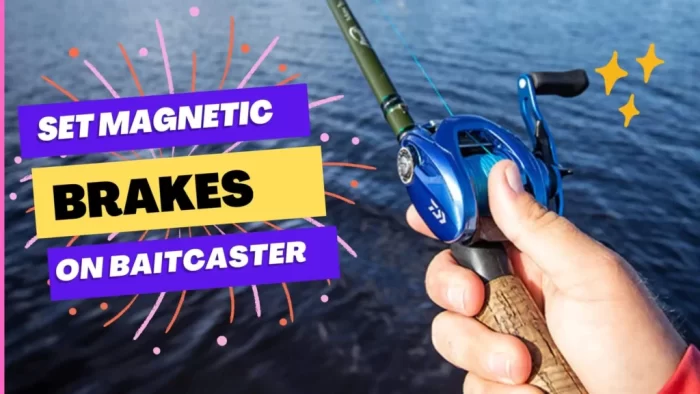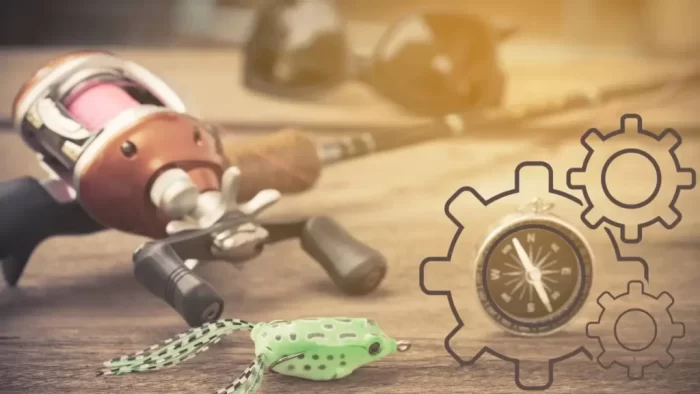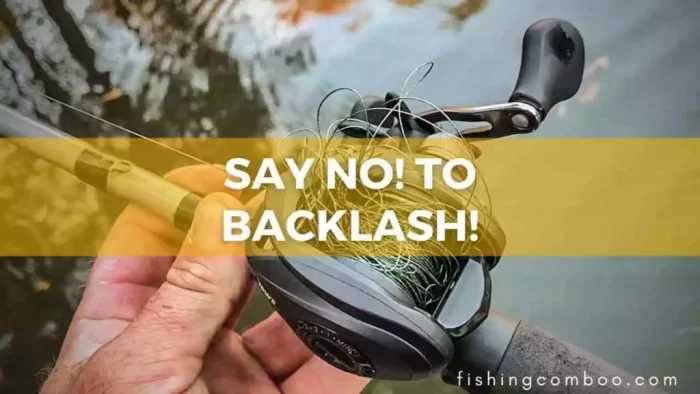Have you ever been out fishing and suddenly become frustrated because your baitcaster has become so tangled up that it takes hours to untangle it? Luckily, we have tips that will show you how to untangle baitcaster quickly and easily.
When a baitcaster becomes tangled, the line gets twisted and knotted in a way that can seem almost impossible to untangle. But you’d be surprised how easy it is to do this task. Following our secret method and tips can save your line, time, and energy!
What are Tangles or Backlashes in Baitcaster
A tangle or backlash in a baitcaster is caused when the line twists and knots itself due to an improper retrieval.
This is usually caused by too much spool speed, resulting from the angler reeling too quickly or too heavily on their cast. When this type of tangle occurs, it can seem like an unending cycle of trying to fix it and then having it get tangled line again.
table of contents
- 1 How to Untangle Baitcaster Easily Step by Step
- 2
- 3 Thumb Trick to Untangle a Baitcaster
- 4
- 5 Common Causes that Lead to Tangled Mess Baitcaster Lines
- 5.1
- 5.2 Improper Line Winding:
- 5.3
- 5.4 Incorrect Drag Settings:
- 5.5
- 5.6 Improper Casting Technique:
- 5.7
- 5.8 Tying Knots Incorrectly:
- 5.9
- 5.10 Not Trimming the Line Regularly:
- 5.11
- 5.12 No Maintenance Reel:
- 5.13
- 5.14 Using Lighter Lures too Often
- 5.15
- 5.16 Using Lightweight Lures with a Powerful Reel
- 5.17
- 5.18 Casting an Awkward Angle
- 6
- 7 Frequently Asked Questions
How to Untangle Baitcaster Easily Step by Step
Whether you’re an experienced angler or just starting, there’s a good chance you’ve encountered the dreaded bait caster tangle.
Baitcasting reels are excellent for casting more accurately and getting more distance when using heavier lures, but they can be difficult to untangle if not cared for properly.
If your line is tangled, don’t worry. You can quickly and easily untangle your bait caster with a few simple steps.

Tools You Need to Untangle a Biatcaster’s Line:
- Needle nosed pliers
- Scissors
Step 1: Detach the Line from Your Reel

It is first necessary to remove the line from the reel. You can do this by loosening the drag and pulling out as much line as possible. Make sure to hold the spool in place, so it stays tight and creates further tangles.
Step 2: Inspect Your Line & Remove Knots
Once your line is pulled out, lay it flat and inspect for any knots or snags. If you find any, remove them with needle-nosed pliers or scissors.
Step 3: Smooth Out Your Line
After you have removed all knots and snags, use your hands to smooth out the line. This will help ensure it flows appropriately when you feed it into your reel.
Step 4: Reattach the Line to Your Reel
Once your line is smooth and tangle-free, it’s time to reattach it to your reel. Take a few feet of line and thread it through the guide at the end of your rod.
Then, wind the line onto the spool in an evenly spaced pattern. Don’t wind too tightly, as this can create tension and cause more tangles.
Step 5: Test Your Line
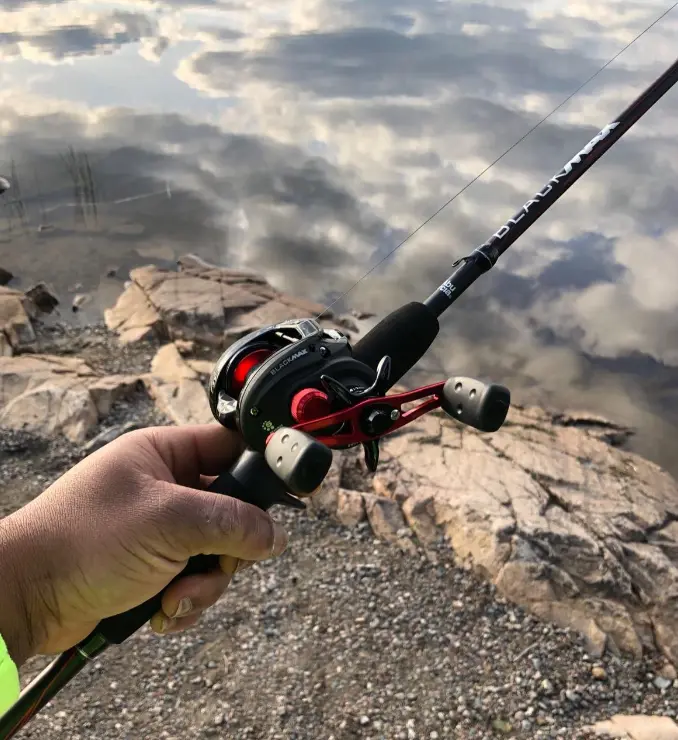
Once your line is wound onto the spool, it’s time to test it. Cast a few times and make sure everything is working correctly.
If you still have issues, try using a lighter to sing off any kinks in the line lightly. This should help reduce friction and make it easier to cast without tangling up again.
That’s how you untangle a bait caster! You can get your line running again in no time by following these simple steps. Get out there and enjoy successful fishing with your newly untangled reel!
Thumb Trick to Untangle a Baitcaster
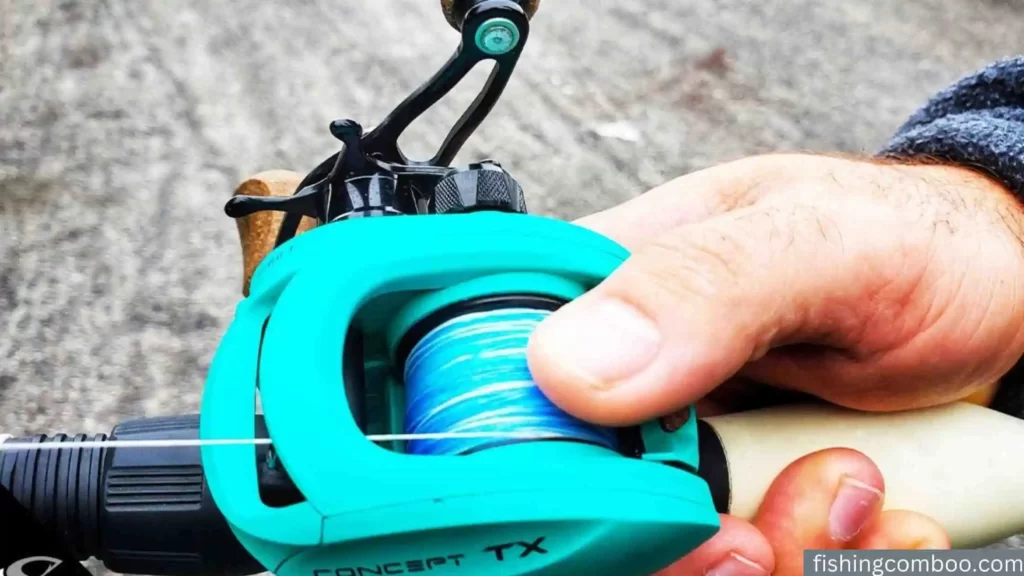
Cutting the line isn’t a solution because to use a baitcaster again, you need to tie the line back up. The thumb trick is to get your baitcaster out of a tangled mess quickly and without cutting the line. Here’s how it works
The thumb trick is an easy and effective way to recover from a tangle.
First, you have to take off the spool from the reel of your baitcaster. Dispose of any line that’s stuck on the spool.
Second, hold the spool with your thumb and index finger. With your other hand, run your fingers through the tangled mess of lines. Gently tug on the line to separate it from the knot.
Third, spin the spool in a clockwise direction 3 to 4 times after you’ve separated the tangle. Then spin it in an anti-clockwise direction 3 to 4 times. This helps a lot with the tension of the line.
Fourth, after you’ve spun the spool, hold it firmly with your thumb and index finger again, and separate the tangle using your other hand.
Fifth, put the spool back on the reel once the tangle has been separated. Make sure it is tight so that the line can spin freely.
Finally, you’re ready to cast again! The thumb trick is an easy and effective way to untangle a baitcaster quickly and without cutting the line. If you’re in a bind, it’s worth giving it a go!
Read Review: 8 Best Baitcaster Rod and Reel Combo for Bass
Common Causes that Lead to Tangled Mess Baitcaster Lines

Here are some of the most common culprits behind bird’s nests or tangles:
Improper Line Winding:
When your line is wound too tightly, it can cause tension and increase friction–making it more likely that you’ll experience a tangle while casting. Other common causes include using an old or damaged line and using the wrong line for the weight of your lure.
Incorrect Drag Settings:

If your drag is too tight, it can create tension on the line, making it more likely to tangle. However, if it’s set too loose, you may experience backlashes when casting and retrieving lures. Make sure you adjust your drag to the proper settings and use larger lures if necessary.
Improper Casting Technique:
Your casting technique can also play a role in how likely it is that you’ll experience tangles. Using too much force or jerking your rod when casting can cause your line to knot up and tangle.
Practice proper casting techniques and use a heavier lure if necessary to reduce the chance of tangles.
Tying Knots Incorrectly:
If you’re using a knot to attach your line to the reel, you must tie it correctly. Poorly connected knots can create excess friction and cause tangles. Ensure you practice tying your knots properly and use a high-quality fishing line for added durability.
Not Trimming the Line Regularly:
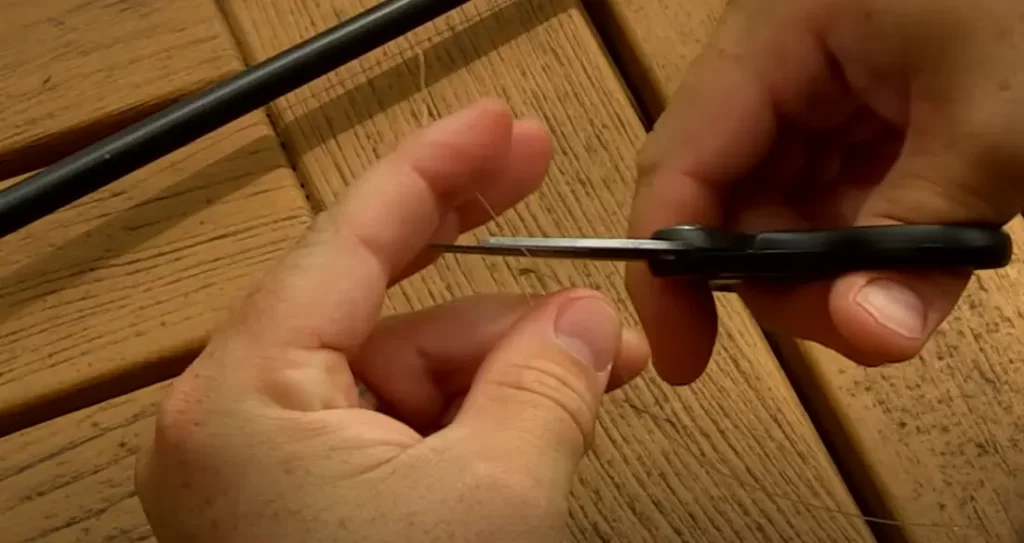
Over time, your fishing line will wear out and become more prone to knots and tangles. To prevent this, make sure you regularly inspect your line for nicks or abrasions and trim off any damaged sections. This will help keep your line in good condition and reduce the chances of tangles.
No Maintenance Reel:
Failing to maintain your fishing reel properly can also lead to tangles. Make sure you give your reel a good cleaning every few months, lubricate the parts as needed, and check for any loose or broken parts that could cause line tangles.
Taking care of your baitcasting reel will help ensure it runs smoothly and reduces the risk of tangles and backlashes.
Learn About: How to Tune a Baitcaster
Using Lighter Lures too Often
Use heavier lures when possible, as they typically stay straighter during casting and reduce the chance of tangling.
Using Lightweight Lures with a Powerful Reel
The combination of light lures with powerful reels can create an imbalance, resulting in increased chances of tangled lines.
Casting an Awkward Angle
Make sure you consider wind conditions, distance from shore, and other factors before making your cast to reduce stray lines that could get snagged on something nearby.
A few frequent culprits can result in your baitcaster’s lines becoming tangled. By following the steps outlined above and avoiding these mistakes, you’ll be able to keep your line untangled and cast confidently.
Frequently Asked Questions
Why does my baitcaster always get tangled?
The most likely reason your baitcaster is getting tangled is because of how it’s being used. Improper line winding, incorrect drag settings, improper casting technique, tying knots incorrectly, not trimming the line regularly, using lightweight lures with a powerful reel, and casting an awkward angle can all contribute to tangles.
Ensure you know how to use your baitcaster correctly and follow the steps outlined above to reduce the chance of tangles. If you’re still having trouble, consider using a heavier lure or checking your equipment for any damage or loose parts.
What do I do if my baitcaster not reeling correctly?
If your baitcaster needs to be reeling correctly, it may be because the drag settings are too tight. Try loosening the drag to see if it improves the line retrieval. If not, check for any snags or obstructions preventing it from rewinding properly.
It’s also possible that there could be a problem with the internal mechanism of your reel, so you may need to have a professional look at it. If all else fails, consider replacing your reel with a new model designed for heavier lines and improved line retrieval.
How do you unnest a baitcaster?
Nesting occurs when the line is tangled around itself and wound tightly in a knot. To un-nest your baitcaster, start by cutting off the tangled section of the line before rewinding it onto the reel.
Use a pair of needle nose pliers to untangle any remaining knots, and ensure you’re winding the line in the correct direction. Wind it onto the spool evenly and then secure the line with a knot. Finally, check to ensure that there are no kinks or twists in your line before you cast again.
Conclusion
In conclusion, learning how to untangle a baitcaster line properly is an essential skill for every angler. The key is to be aware of the common causes of line tangles.
By understanding these causes and taking the proper steps to ensure your baitcaster is working correctly, you can avoid annoying tangles and have a more successful fishing experience.


